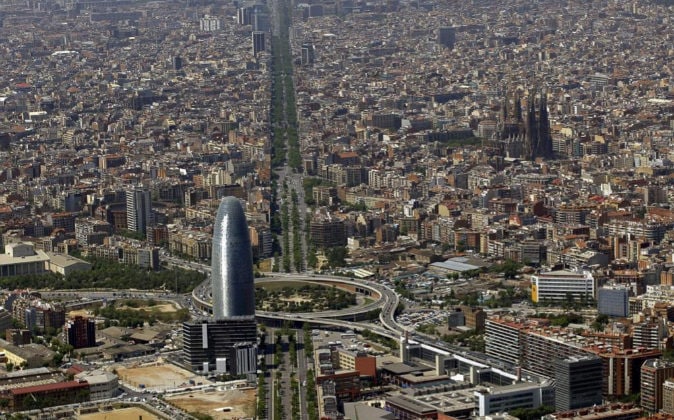At the heart of the Barcelona metropolitan area is a unique demographic reality in Europe: a highly concentrated urban epicenter that defies conventional population density limits.
With nine of the ten most populated square kilometers in Europe, the Barcelona region is consolidating its position as the continent’s most hyper-dense urban epicenter.
Specifically it refers to La Florida in l’Hospitalet, which is the most densely populated neighborhood in Europe, with more than 56,000 residents in an area of just one square kilometer.
This title, although not surprising, highlights an increasingly pressing reality: the demographic concentration in certain points of the Barcelona metropolitan area is constantly increasing.
In La Florida, nearly 10,000 more people have found homes since the start of the Eurostat series in 2011, signaling an upward trend in population density.
Continued growth of the urban epicenter: from l’Hospitalet to Badalona
The hyperdensity phenomenon is not limited to La Florida; it encompasses the urban continuum that extends from l’Hospitalet to Badalona. This geographic strip is the epicenter where the urban areas with the largest number of residents are concentrated.
The Barcelona region not only dominates this list, but is overtaking cities such as Paris and Madrid, which have lost presence on the list. While other European metropolitan areas are experiencing population stagnation, Barcelona continues to attract new residents and its growth continues unabated.
Immigration and hyperdensity
Joaquín Recaño, PhD in Geography and researcher at the Centre d’Estudis Demogràfics, points out that the massive influx of immigrants in Barcelona is a key factor in explaining this phenomenon.
While in other regions of Europe natural vegetative growth is negative, Barcelona benefits from the constant arrival of new residents that compensate for this demographic imbalance.
The city thus becomes a unique example of demographic dynamism in a continent that, in general, faces the challenge of an aging population.
The problem of hyperdensity in Barcelona is not new and has deep roots in the city’s urban planning. The lack of green spaces and unrestricted urban development during the migratory wave of the last century contributed to the creation of areas such as La Florida and Llefià and La Salut in Badalona, the two most densely populated areas of the metropolitan area.
The need for housing for migrants arriving in the city led to the construction of blocks that eventually changed ownership and became residences for a diverse population.
Challenges and future prospects
The problem of hyperdensity poses significant challenges for Barcelona, from the need for more social renting to the efficient management of urban resources. However, it also highlights the city’s ability to evolve and adapt to changing demographic dynamics.

